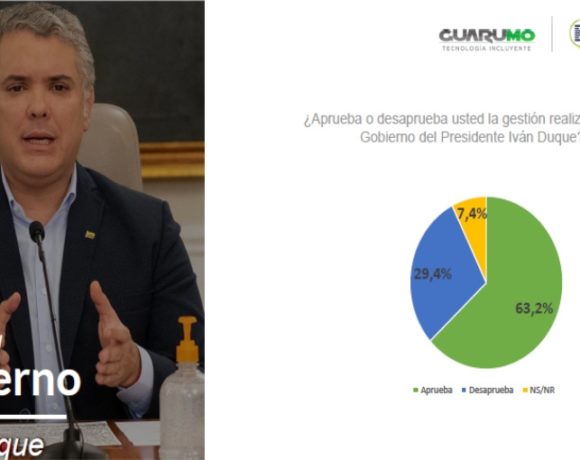Stronger U.S. Dollar: Opportunities for Colombia Business, Real Estate

The surge in the value of the U.S. dollar against the Colombia peso — up nearly 70% year-on-year, to roughly COP3,000 per US$1 — has meant a big boost in profits for established, large-scale Colombian exporters in sectors including coffee, cut flowers and other industries.
In recent years, when the COP/US dollar exchange rate was hovering around COP1,700 per $1, those same Colombian exporters were crying the blues. So were Colombia-based employees of U.S. and other non-Colombian companies that earned their salaries in U.S. dollars.
But exchange rates don’t tell the whole story for all Colombian exporters, for expat employees, or for U.S. or other international investors (including real-estate buyers) eyeing Colombian investments.
For example: Not all Colombian exporters of manufactured goods are hailing today’s strong U.S. dollar, as many of them import supplies, machinery and unfinished goods (which they pay-for in dollars) that later are used to make finished goods for export. Those supplies — and any outstanding loans they contracted in U.S. dollars in years past– now cost about 70% more than they did last year.
This is why 64% of the member companies of ANDI — Colombia’s main industrial trade association — now cite the dollar/peso exchange rate as their number-one business problem.
Materials costs, price wars and Colombia’s recent tax reform come in as distant second, third and fourth places in the survey, which was released at ANDI’s 71st annual assembly in Cartagena in mid-August 2015.
Other examples of paradoxical impacts of the rising dollar on Colombian business abound.
For example: In a recent interview in the Colombian business newspaper Portafolio, Andres Restrepo, the new president of Mineros SA (Colombia’s biggest gold-mining company), pointed out that when his company sells an ounce of gold produced in Colombia, it now gets more than COP3 million per ounce, whereas when the COP/dollar exchange was only COP2,000 per US$1 (last year), the company only earned COP2.4 million per ounce of gold.
Hence the surging U.S. dollar helps Colombia-based Mineros compensate for the relatively lower price of gold on the world market, compared to recent years.
On the other hand, because of the fall in gold prices, Mineros has cut-back on exploration expenses while shifting more of its capital budget toward producing sites. The surging dollar also has hurt profits in countries where its costs are based on dollars rather than pesos.
As for real estate investing in Colombia, U.S. dollars can go a lot farther today (compared to last year) when buying apartments, houses or commercial properties, according to La Lonja de Propiedad Raíz, the Medellin-based real estate trade association.
In a recent interview published in El Colombiano (Medellin), La Lonja executive director Federico Estrada García was quoted as saying that real estate property prices (in Colombian pesos) in metro Medellin have risen an average of only 1.7% through the first half of 2015. So the recent surge in the U.S. dollar hasn’t fully translated into a surge in real-estate prices in Medellin.
Similarly, Colombia’s national construction-industry trade association (Camacol) revealed in a recent interview in Portafolio that middle-class housing construction is forecast to grow by 25% between 2016-017, or 12.5% per year — an indication that housing prices aren’t stopping growth.
Across Colombia, some 61,000 new housing units are likely to be built in 2016 and another 69,000 in 2017, according to Camacol. Government subsidies that cut 2.5 percentage points off housing-loan interest rates are helping to spur the growth. The COP/dollar exchange rate hasn’t had any noticeable effect on housing construction.
Meanwhile, thanks to plunging global oil prices and a consequent plunge in Colombia government revenues taken from the state-owned Ecopetrol oil company, Colombia’s over-all economy has taken a hit this year. Latest GDP growth estimates for Colombia have fallen below 3% for 2015 and are seen likely to be weaker in 2016.
On the other hand, the soaring U.S. dollar has helped compensate for falling oil prices — but it doesn’t cover all the gap, according to Colombia’s finance minister.
Meanwhile, publicly traded stock prices on Colombia’s stock exchange likewise have taken a dive this year. But in response, foreign investors have been boosting their purchases, taking advantage of the share-price cost dip as well as the surging dollar, which now can purchase many more shares of Colombian stocks and bonds per dollar invested. These investors also are banking-upon an eventual share-price rebound — taking a time risk, of course.
A warning, however: The rise and fall of the Colombian peso against the U.S. dollar over years and decades shouldn’t be the determining factor for those considering investing (or disinvesting) in less-liquid assets such as real estate. One reason: Property turnover isn’t nearly as fast in Colombia as it is in the relatively quick-moving, low-interest-rate U.S. housing market.
Example: Say you bought a property in Medellin for COP400 million five years ago when the COP/dollar exchange was closer to COP1,700/US$1. You effectively paid US$235,000 for that property.
Now, if you now sell that same property today for COP500 million (a nominal COP100 million gain) and then convert today’s pesos to dollars to buy another property back in the USA, you will have gotten only US$170,000 for that Medellin property, despite the COP price inflation. In other words, your net return on that investment would be a US$65,000 loss.
So: Don’t make your decisions to buy property or other investments in Medellin (or any other place, for that matter) solely based on exchange-rate plays.
What goes up must come down, and vice-versa. Be prepared to ride the waves.
















